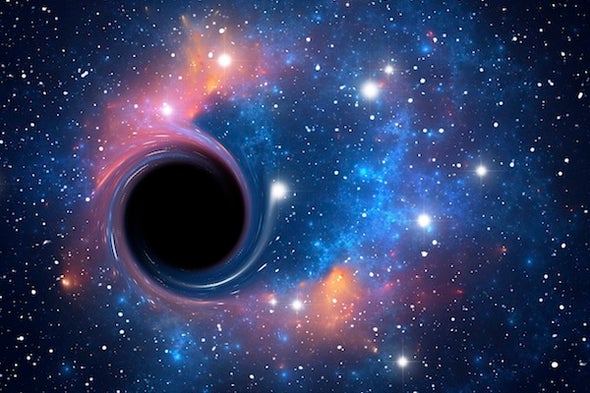Black-Holes, An Introduction
Black holes are fascinating and mysterious objects that have captivated scientists and the general public alike for decades. In simple terms, a black hole is an area in space with such strong gravitational forces that nothing, not even light, can escape. Here are some key facts about black holes that will help you understand this intriguing phenomenon.
What are black holes? A black hole is a region of space where the gravitational forces are so strong that nothing can escape it. They form when a massive star runs out of fuel and collapses in on itself, creating an area of intense gravitational forces.
Types of black holes There are three types of black holes: stellar, intermediate, and supermassive. Stellar black holes are the most common and form from the collapse of a single massive star. Intermediate black holes are larger than stellar black holes but smaller than supermassive black holes. Supermassive black holes are found at the center of most galaxies and can be billions of times more massive than the sun.
Event horizon The event horizon is the point of no return for a black hole. Anything that passes the event horizon, including light, cannot escape the gravitational forces of the black hole.
Singularity At the center of a black hole is the singularity, a point where the gravitational forces are so strong that space and time become warped. The laws of physics as we know them break down at the singularity, making it impossible to predict what happens beyond it.
Hawking radiation Theoretical physicist Stephen Hawking proposed that black holes emit a type of radiation known as Hawking radiation. This radiation is caused by the interaction between virtual particles and the strong gravitational forces of the black hole.
Effects on nearby objects Black holes can have a significant impact on nearby objects. For example, the intense gravitational forces can cause nearby stars to orbit around the black hole, sometimes at incredibly high speeds.
Time dilation Time dilation is a phenomenon that occurs near black holes, where time appears to slow down or even come to a standstill. This is due to the intense gravitational forces that warp space and time near the event horizon.
Black holes can merge When two black holes are in close proximity, they can merge together to form a single, larger black hole. This process releases a significant amount of energy in the form of gravitational waves.
Size and mass Black holes can vary in size and mass, ranging from a few times the mass of the sun to billions of times the mass of the sun.
Importance in astronomy Black holes play a critical role in our understanding of the universe. They can help us understand the evolution of galaxies and the distribution of dark matter. The study of black holes has also led to significant advancements in our understanding of gravitational waves and the nature of space and time.
In conclusion, black holes are fascinating objects that continue to captivate scientists and the general public alike. From their intense gravitational forces to their impact on nearby objects, black holes have a significant impact on our understanding of the universe. While much is still unknown about black holes, ongoing research and advancements in technology continue to shed light on this intriguing phenomenon.

:focal(2362x1597:2363x1598)/https://tf-cmsv2-smithsonianmag-media.s3.amazonaws.com/filer_public/18/f4/18f4e941-b85b-45ae-b07c-52eaa6ca1f84/gettyimages-1237093074.jpg)
Comments
Post a Comment
Follow for more! If you have any doubts or suggestions, let us know!